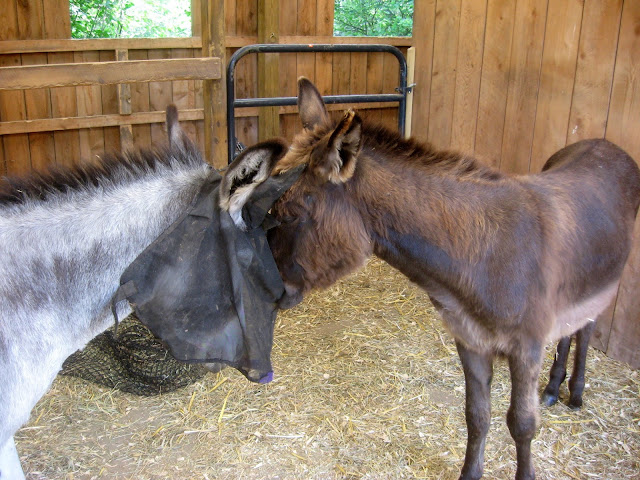All of the soil and feed testing is exactly the same whether you are feeding cows, horses, sheep, donkeys, etc. Even interpreting the results is mostly a matter of comparing the findings with the NRC tables for horses (or donkeys, sheep, etc) rather then cows. It's getting the raw data in the first place that you really need and these are the people who are most likely to help.
Once you get past the whole horse vs. cow thing, they will usually come right out to your farm (free of charge!) to do soil tests and collect your forage samples. You will have to pay for the actual tests, but the price is the same as if you collected the samples and sent them in yourself, at least it is here. Doing things this way, you get the advantage of a pasture expert who has the right tools to collect samples properly and at least understands the soils and how minerals interact. A maintenance ration for a dry cow and for a horse are not that dissimilar after all. They do this because, once you create a balanced ration, they want you to buy it from them, which isn't a bad thing. You have to get the stuff somewhere and buying it from a local business who in turn buys their commodities from local farms is what keeps communities alive. It's also likely to cost a fraction of what you'll spend out of a catalog or tack store.
So here's how it works: I call the store, in my case it's a company called McDowell & Walker and speak with the feed specialist. If you are in the five county area surrounding Chenango county in upstate NY, these folks are probably your best option. I have found them to be very helpful so far. The feed guy tells me he can come out to the farm the very next day...
we do a pasture walk, examine what's growing there and collect samples.
Then we head down to Riding Buddy's place to check out her pasture and collect the hay samples as she has some of all of our hay in her barn.. To get accurate hay samples, you need a hay corer, which is the tool you can see here...
along with some elbow grease (or a really good drill:).
RB has hay from several sources and we decided to have them all tested because we really need to know exactly what these critters are eating.
Once all the samples have been collected, they get sent off to Equi-Analytical for testing. Anyone, anywhere can send samples here, just check their site for details if you are interested. They also sell the corer, but at $120 it's nice to have McDowell & Walker come out with theirs.
Once you have the data, is when you might want to get in touch with extension agencies and Ag. schools with equine programs to get some help in interpreting the results. There are also a couple of commercial sites that will work up an analysis for you that you can then take back to the feed mill so that they can use the information to custom mix a ration balancer for you.
We should have all of our results back early next week. I post the info once I get it sorted out. We are anxious to to get some real information to work with rather then keeping up the guessing game we have been playing for so long.
I have been toying with the idea of offering ration analysis as a means of generating a little more income. Would anyone out there be interested? I do have a background in all of this as I have an AAS degree in Saddle Horse Management and a Bachelors in Ag. Technology. I am rusty in all of it as I haven't sat down to do the math in a long while, but it is coming back and I have been delving deep into all of the latest research (research being one of the things I am very good at). I'd love to hear your feedback.


















































